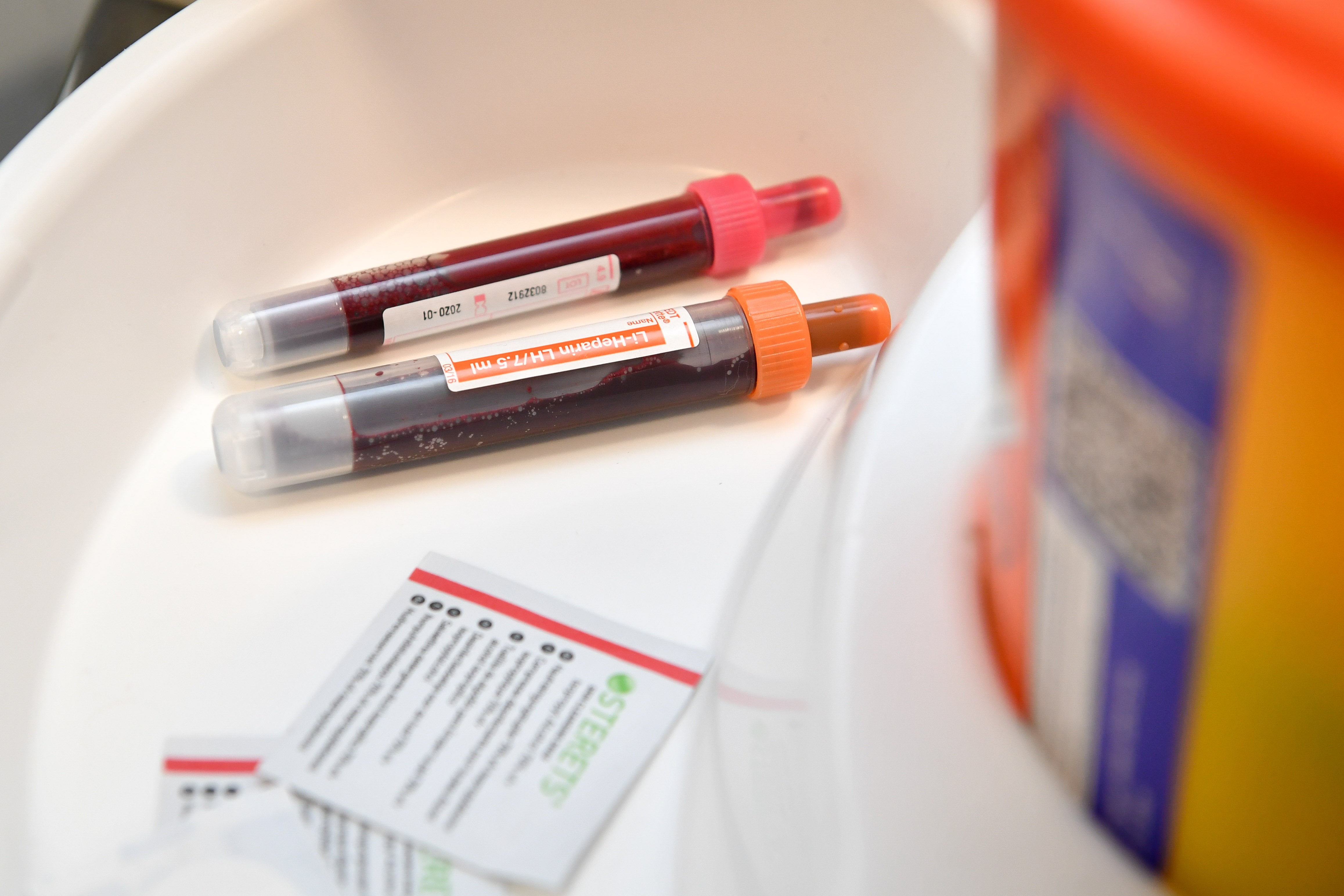Blood test could predict future risk of leukaemia, study suggests
Identifying those most at risk could mean it is possible for them to receive treatment earlier.

A blood test could help better predict the risk of leukaemia in older people and ultimately improve early diagnosis of the disease, new research suggests.
By identifying those most at risk it should be possible to provide preventive or early treatment to improve patient outcomes, experts say.
In the UK, 28 new patients are diagnosed with leukaemia every day, and each year more than 40% of all new leukaemia cases in the country occur in people aged 75 and over.
As we age, our blood system can become damaged, potentially increasing the chance of developing blood cancer like leukaemia.
The ability to detect leukaemia at the earliest opportunity in the elderly may provide options for less harsh but effective treatments
Dr Kristina Kirschner, co-lead author and senior lecturer at University of Glasgow’s Institute of Cancer Sciences, said: “In knowing an individual patient’s risk of developing leukaemia, clinicians can schedule shorter gaps between appointments in those most likely to develop the disease and provide early treatment, which is more likely to be successful”.
Dr Linus Schumacher, co-lead author and Chancellor’s Fellow at the Centre for Regenerative Medicine of the University of Edinburgh, said: “To understand leukaemia risk, we need to consider the balance between the different cells involved in blood cell production and how this balance changes as we grow older.
“By linking genomic data with machine learning we have been able to predict the future behaviour of blood cells based on the mutations they develop.”
The researchers, based at the University of Edinburgh, University of Glasgow and the Cancer Research UK Beatson Institute, used data from a long-term study in Scotland that collects information from people as they aged.
They measured changes in blood samples over a 12-year period, in a group of 85 people from the age of 70 onwards.
The scientists combined this data with an artificial intelligence algorithm to link different gene mutations with different growth speeds of blood stem cells carrying these mutations.
If lots of these cells with mutations develop, the risk of cancer grows.
The chances of these groups of mutated cells developing increases with age.
Exploring the mutations in more detail allowed researchers to better identify gene changes that were likely to go on to cause disease such as leukaemia.
Knowing who has these mutations means they can be more closely monitored to diagnose and treat the disease earlier.
Dr Dawn Farrar, Director of Impact at Leukaemia UK, said: “These are exciting new findings.
“The ability to detect leukaemia at the earliest opportunity in the elderly may provide options for less harsh but effective treatments.
“Identifying a future risk of development of leukaemia may ultimately offer the possibility of prevention and therefore save more lives.”
“These early stage findings provide an important stepping stone for further research to build on, with the potential to transform and personalise monitoring and follow-up for patients in the future and could ultimately play a role in preventing disease.”
The findings are published in the Nature journal.
Bookmark popover
Removed from bookmarks